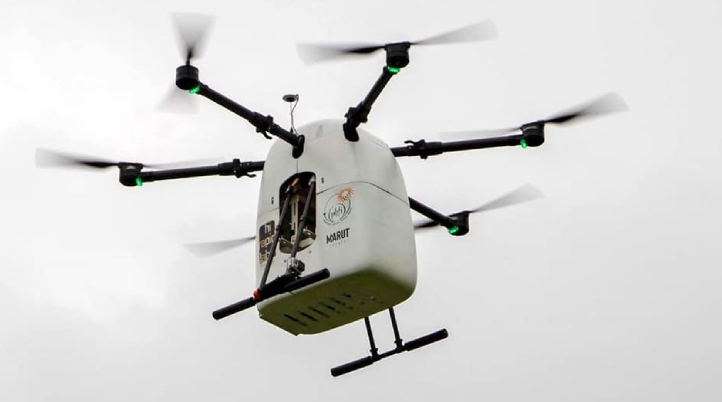To accelerate the transformation from inefficient health supply chains to digital, resilient infrastructure that reduces wastage and improves health outcomes, the World Economic Forum's (WEF) Medicine from the Sky (MFTS) program aims to use drone technology to extend urban-grade healthcare to India's remotest areas and ensure that "nobody is left behind." To achieve that, WEF partnered with the Government of Telangana, India, Apollo Hospital's Healthnet Global, and NITI Aayog, the Indian government's federal think-tank. It also plans on working with businesses, policy-makers, and multiple stakeholders, including healthcare workers, local communities, local police, district-level administrators, and local air traffic control.
Earlier this year, the MFTS program ran a series of trials involving over 300 beyond visual line of sight (BVLOS) drone flights in 45 days to provide evidence of the advantages and potential of the technology, especially when combined with aviation policy changes and to serve as a model for implementation in the developing world. The trials saw healthcare professionals delivering vaccines, COVID-19 testing samples, and medical products to a population of over 300,000 people represented by eight district health facilities in the Vikarabad district of the southern state of Telangana, where multiple communities live in dense forests.
"Telangana has been a torchbearer for the Fourth Industrial Revolution," said KT Rama Rao, Minister for Municipal Administration and Urban Development, Industries & Commerce, and Information Technology of Telangana. "Using drones to successfully enable a case for touching the lives of citizens in remote and inaccessible areas is a highlight that demonstrates how drones can be integrated into the healthcare ecosystem."
In the "How Drones Can Make Primary Healthcare Accessible to All" report launched in May 2022, WEF explains how the MFTS program was raised from the ground up and how it dealt with the preparatory, regulatory, and technological hurdles that appeared along the way. For example, the team stresses how communication and understanding between participants are essential to set up a drone program and how crucial it is to weigh the differences between drone and no-drone scenarios while also accounting for intangible factors when considering the use of UASs to address healthcare issues.
At the end of the 45-day period, WEF had activated eight air corridors within the 16-corridor window endorsed by the regulatory agencies, where payload-capable UASs covered a total aerial distance of more than 373 miles (600 km) at the height of 300 feet (90 m), carrying an average weight of 2.3 kg, in different weather conditions – sunny, cloudy and rainy, with humidity levels ranging from 58 to 99%. In 2030, WEF counts on having at least 1M drone pilots, drones in the intermodal logistics system, and ensuring all remote health facilities are certified as drone capable with the necessary infrastructure.
On another note, in April 2022, Skye Air Mobility, an Indian drone delivery and logistics startup, began its first commercial drone delivery project at scale in partnership with Indian diagnostics service provider, Redcliffe Labs. The project's first phase started with select districts and a defined goal of 1,000 deliveries per month and "100,000 drone deliveries in this next year", added Ankit Kumar, chief executive at Skye Air. The company claims this is "the first commercial drone delivery project in India at scale, offering bulk delivery services for businesses." As part of that partnership, a commercial drone corridor between Uttarkashi and Dehradun is now opened, reducing the travel time of 6-8 hours by road or 12 hours during a landslide to 88 minutes using drone technology with one battery swap in between.
"We are elated to collaborate with Skye Air Mobility to speed up how diagnostics services are delivered in our country," Dheeraj Jain, Founder at Redcliffe Labs, commented. "We started the company with a vision to provide world-class diagnostic services to people across the Indian subcontinent in an affordable manner and intend to serve 500 million Indians by 2027. This step is strategic in terms of achieving reduced turnaround time along with serving patients even in the remotest parts of the country."




.png.small.400x400.png)











Comments